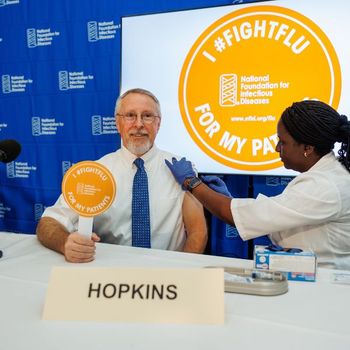
Meningitis in Oklahoma: Health Department Update
Oklahoma state and county health officials are at the Oologah-Talala lower elementary school again today after several cases of meningococcal disease occurred in students who attend the school.
Health officials will offer, with parental consent, antibiotics as a preventive measure to lower elementary school children (pre-K through 2nd grade), school staff, and close contacts with cases. County and state health department staff provided antibiotics to 640 people yesterday.
In addition to the six cases previously reported, health officials continue to investigate possible contacts and possible cases. Two children have died from the disease. Four remain hospitalized.
The Oklahoma State Department of Health phone bank will be open today from 8 a.m. to 5 p.m. to provide information to the public regarding cases of meningococcal disease in the Oologah-Talala elementary school. Callers can dial toll-free 1-866-278-7134. The hotline received 60 calls Thursday.
Public health officials stress that the general public is not at risk. Only persons who have had close, personal contact to a person with a meningococcal infection have a slightly increased risk of developing the disease.
Meningococcal disease is caused by the bacteria Neisseria meningitidis. Many healthy people carry meningococcal bacteria in their nose and throat without any symptoms. Usually, the bacteria stay in the nose and throat for a few days and will then disappear. The bacteria are spread from person-to-person by direct contact with secretions from the nose and throat. The reason that the organism disappears in some people and produces illness in others is not clearly understood but is probably related to individual susceptibility.
The symptoms may appear two to 10 days after infection, but usually appear within three to four days. People ill with meningococcal septicemia may have fever, nausea, vomiting, and a rash. People that are ill with meningitis will have fever, intense headache, nausea, vomiting, and a stiff neck. It is important to seek care from a physician as soon as possible if these symptoms appear.
Rifampin is the antibiotic generally prescribed for those with close contact, ceftriaxone, rifampicin, and ciprofloxacin may also be prescribed. Antibiotics eliminate the bacteria from the nose and throat of persons carrying it, which may help protect contacts from developing a meningococcal infection.
Sixteen cases of meningococcal disease were reported in Oklahoma during 2009 with one death. Thus far in 2010, five cases were reported with one death. (These cases are not connected to current investigation.)
For more information on meningococcal disease, visit the Oklahoma State Department of Health Web site at
Newsletter
Stay prepared and protected with Infection Control Today's newsletter, delivering essential updates, best practices, and expert insights for infection preventionists.






